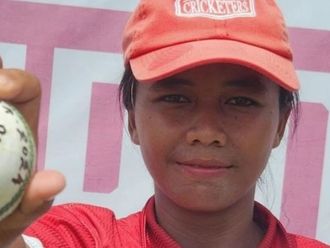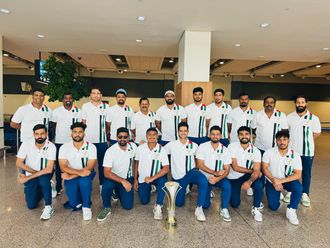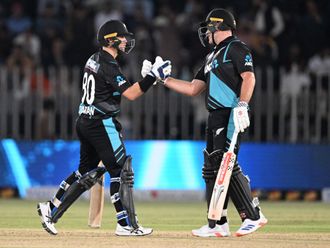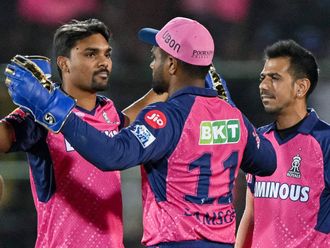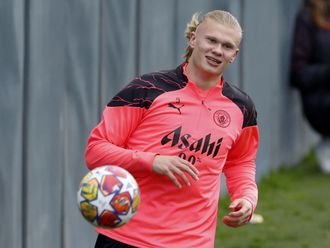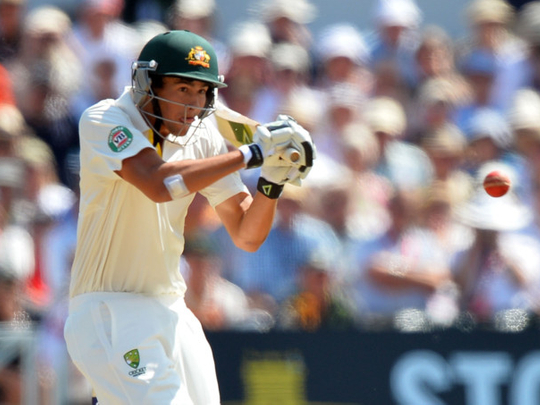
Nottingham, England: England knew Australia were considering their new teenage star Ashton Agar, who scored a record-breaking knock for a number 11 of 98 last week, for the first Test before the squads even assembled in Nottingham.
Ashley Giles, England’s one-day coach and right-hand man to the team director, Andy Flower, went to the final day of Australia’s last warm-up match at Worcester specifically to watch Agar bowl.
Although the left-arm spinner sent down 20 overs in the day without adding to the wicket of Nick Compton he had taken the previous evening, Giles was impressed.
Sufficiently impressed, indeed, that word apparently soon got back to Giles’ former club, Warwickshire.
Unfortunately, although Giles saw Agar bowl, he didn’t see him bat — and Agar’s left-handed batting was what first hurt England as he played with freedom and without fear, exactly as Darren Lehmann, Australia’s new coach, had asked his players to.
Laid-back teenagers are hardly rarities, but those who take their insouciance into the cauldron of an Ashes Test assuredly are. England’s tactics depend on information provided by the team analyst, Nathan Leamon, but because Agar has been a first-class cricketer for only six months, there was little on which to draw.
As James Anderson admitted: “We didn’t know much about him.” In reality, no amount of research could counter Agar’s deadliest weapon, his joyous lack of inhibition. In the end, the old-fashioned method of bombing him with short balls did the trick, but not before he had scored 98, the highest innings played by a Test No. 11, in a record 10th-wicket Test partnership of 163 with Phillip Hughes.
While the England and Australia camps may have known he was a contender, Agar’s selection surprised everyone else when it was unveiled. The Australian players had been told of the first team two days earlier but they kept it secret.
The contenders
Agar had known he was in the mix, having been told a month ago that he was staying in England with the Test squad after an Australia A tour, while Fawad Ahmad, the Pakistan-raised leg-spinner whose qualification was being fast-tracked, was sent home. Until then, Nathan Lyon was the only specialist spinner in the Ashes party.
Agar was told he would stay only until the Lord’s Test, but that policy will certainly change now.
The swiftness of his rise is not unusual in Australia, where there are only six state teams and opportunities at that level are hard to find. He may have appeared in only 10 first-class matches, but Lyon had played only five before his Test debut and Jackson Bird, another member of the squad, was chosen after 17 games. By comparison, England’s early starters are much more seasoned: Joe Root played 36 first-class matches before his first Test outing, Alastair Cook 37 and Stuart Broad 39.
Before moving to Western Australia last year, Agar found his path to the Victoria side blocked by more experienced spinners, but he was still on Australia’s radar. He had represented Australia Under-19s and commanded a contract worth $125,000 (Dh459,015) to play four-day and one-day cricket for his new state.
Australia’s chairman of selectors, John Inverarity, became a convert after seeing him bowl while umpiring a practice match and, within weeks of Agar making his state debut — courtesy of an injury to fellow left-arm spinner Michael Beer — he was added to Australia’s squad for the early weeks of their tour of India, where he came close to appearing alongside Lyon in the opening Test.
Inverarity also arranged a scholarship for him to train at Hampshire’s Ageas Bowl for the Australia A tour. “I watched one of his first net sessions and was most struck by his batting: almost everything seemed to zing out of the middle of his bat. I asked him if he was aware that, with Lyon the only specialist spinner in the Ashes squad, he was well placed for a call-up. He agreed that he was — and smiled,” he said.
“He’s always smiling,” his mother, Sonia, said.
Agar’s stint in May with Henley CC, which formed part of his scholarship, gives the misleading impression that he was no more than a club cricketer.
Ringing endorsement
Western Australia teammates were unsurprised by his late-order heroics with the bat. On his Shield debut against New South Wales he held out for 101 balls to save the game and shared two notable 10th-wicket stands with Michael Hogan, who now plays for Glamorgan.
They put on 94 against Queensland and knocked off 68 to beat South Australia. “He has got a good head on his shoulders,” Hogan said. “He is a great person to have around the team” — words that Australian teammates are echoing.
Agar’s family hot-footed it to England to reach Trent Bridge with just five minutes to spare before joining the team huddle in which Ashton was presented with his Baggy Green by Glenn McGrath.
“It’s rescued the psyche of Australian sport,” said one Australian radio broadcaster of Agar’s innings. “This might be the moment to lift Australian cricket out of the mire that it’s been anchored in for a couple of years.”
— The Times Newspapers Limited 2013


